Voice Over Sydney: Mongolian is an Altaic language spoken by approximately 5 million people in Mongolia, China, Afghanistan and Russia. There are a number of closely related varieties of Mongolian: Khalkha or Halha, the national language of Mongolia, and Oirat, Chahar and Ordos, which are spoken mainly in the Inner Mongolian Autonomous Region of China.
Voice over Sydney: Mongolian Language Families
Other languages considered part of the Mongolian language family, but separate from Mongolian, include Buryat and Kalmyk, spoken in Russia and Moghul or Mogul, spoken in Afghanistan.
Voice over Sydney: Written Mongolian
In 1208 Chinggis Khan defeated the Naimans, Turkic tribes living in Central Asia, and captured their Uyghur scribe Tatar-Tonga, who apparently adapted the Old Uyghur alphabet to write Mongolian. The alphabet created by Tatar-Tonga is now known as the Uighur/Uyghur Script, the classical or traditional Mongol Script, the Old Script, or Mongol Bichig in Mongolian.
Voice over Sydney: Traditional Mongolian Script
The traditional Monogolian script was not ideal for writing the Mongolian language, and even less suited for writing Chinese, so during the 13th century a Tibetan monk called Drogön Chögyal Phagpa was asked by Kublai Khan to create a new script for the Mongol empire. Phagpa came up with the ‘Phags-pa script, which is also known as the Mongolian new script, and was based on the Tibetan script. This script was never widely used and after the Yuan dynasty fell in 1368, ‘Phags-pa was used mainly to provide Mongolian phonetic glosses in Chinese texts.
In the late 17th century a Mongolian monk and scholar called Bogdo Zanabazar created a new script for Mongolian called Soyombo, which could also be used to write Chinese and Sanskrit. It was used mainly for Mongolian translations of Buddhist texts and in temple inscriptions.
Bogdo Zanabazar also created another script for Mongolian known as the Mongolian Square Script or Mongolian Horizontal Square Script, (Хэвтээ Дөрвөлжин бичиг / Xäwtää Dörböljin in Mongolian), which was rediscovered in 1801. It was based on the Tibetan script, but what it was used for is uncertain.
In 1567 the translator and scholar Ayuush Güüsh added extra letters to the traditional Mongol Script to make it possible to write loanwords from Tibetan, Sanskrit and Chinese in Mongolian texts. This version of the script is known as the Galik script.
Voice over Sydney: Latin and Cyrillic
In February 1941 the Mongolian government abolished the traditional Mongolian script and from 1st February to 25 Match 1941 Mongolian was written with a version of the Latin alphabet. Then the Cyrillic alphabet was adopted as the official writing system in Mongolia. The official reasons for abandoning the Latin alphabet were the the spelling system used did not represent the sounds of Mongolian very well, however books and newspapers were published in the Latin alphabet, and the decision to switch to the Cyrillic alphabet might have been political.
Voice over Sydney: Reintroduction of Mongolian Script
Since 1994 there have been efforts to reintroduce the traditional Mongolian script and it is now taught to some extent in schools, though is mainly used for decorative purposes by artists, designers, calligraphers and poets. The average person in Mongolia knows little or nothing about the traditional Mongol script, though there is high literacy in Cyrillic. In Inner Mongolian Autonomous Region of China the traditional Mongolian script is still used.




